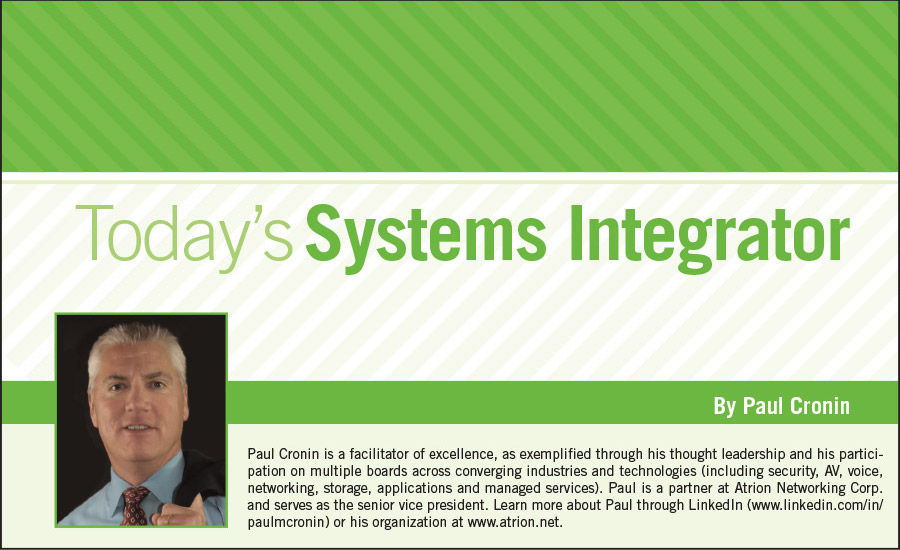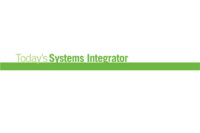I was born one of seven and smack in the middle. However, having a twin brother gave me someone to share the status with. Right behind me was another set of twins and my Mom would always say she got a great ROI on the twin carriage, double cribs and matching outfits that she bought for us. For me, being in the middle was never the best place to be. I usually inherited my brother’s sports equipment and bike; and my parents knew all the tricks in the book when it got to me. But I was always trying to find my niche — the thing that separated me from the pack.
I think the same applies for integrators in business today. Integrators are in a position where they need to be able to differentiate themselves from the rest of the pack and have a clear and compelling value exchange that makes clients want to do business with just them.
Recently at ISC West I facilitated a PSA session titled“To Have or To Hire: The Advancement of IT Skills in the Physical Security Space.” I began the session by setting the stage and talking about the evolving world of the integrator. I referred to “How Competitive Forces Shape Strategy,” Michael E. Porter, Harvard Business Review, 1979.
Integrators today are under more pressure than they have been in a very long time. Suppliers create and control the programs that dictate the requirements and in the end the shrinking margins that integrators make. The low cost of entry into the industry has attracted new companies from across other industries. Even suppliers and distributors are delivering competitive services today.
With the Internet, buyers have more options than they ever have had. With the pop-up of cloud providers we see substitute products being delivered to clients as a service, hosted applications replacing stand-alone systems, and new technology eclipsing systems that are just few years old.
All of these forces are meshed into play today, whereas in the past you would see a few of them at one time but not all of them developing in such an accelerated fashion. For the integrator it is a time to assess each force and begin strategically to plan for ways to transform the business.
Integrators today need to make hard choices. They need to ask themselves what their market strategy is. Do they want to be H&R Block delivering high-volume low-cost tax returns or a CPA firm that delivers high-cost consulting services for complex tax problems? The one thing they don’t want to be is stuck in the middle and not working to differentiate themselves. The middle is a place where services have been commoditized and the value delivered is often times marginalized. Integrators need to find ways to innovate to help them move away from the middle.
The innovation may be to move into an area that allows them to deliver solutions with high speed and buyer ease at the lowest price. For example there are many cloud providers that have established themselves as being the low-cost leader focused on a market segment or application-centric solutions. After the initial sale, much of the buying relationship is handled through portals with little human interaction.
Another approach for integrators might be to differentiate themselves with high-touch unique services that others don’t deliver, but clients need and are willing to pay a premium for. Focus in this area typically involves a more specialized set of services built around a high level of subject-matter expertise. Assessments, vertical application-centric managed services, focus on early adoption, and executive-level business consulting services are some of the things that come to mind.
Engage your team in conversation and decide what side of the curve you want to be the leader on. Ask yourself where you are now and what your evidence is. Do a competitive analysis of all types of competitors, which may unveil some valuable insight to help you determine a baseline.
Once you know where you are and where you want to go, then you need to discuss the differentiators that will get you there. Avoid the thinking that people, products and process are the differentiators. I see a lot of companies say that, but there is nothing compelling to prove it and clients don’t really feel it.
Once you know where you are on the curve and what direction you want to go, then you are ready to start. The competitive analysis may reveal some obvious whitespace showing your differences as well as where there is a gap and clients are underserved. This may be an area to explore and begin focusing on. The important thing is that you move yourself one way or the other, but don’t remain in the middle.
Paul Cronin is a facilitator of excellence, as exemplified through his thought leadership and his participation on multiple boards across converging industries and technologies (including security, AV, voice, networking, storage, applications and managed services). Paul is a partner at Atrion Networking Corp. and serves as the senior vice president. Learn more about Paul through LinkedIn (www.linkedin.com/in/paulmcronin) or his organization at www.atrion.net.






